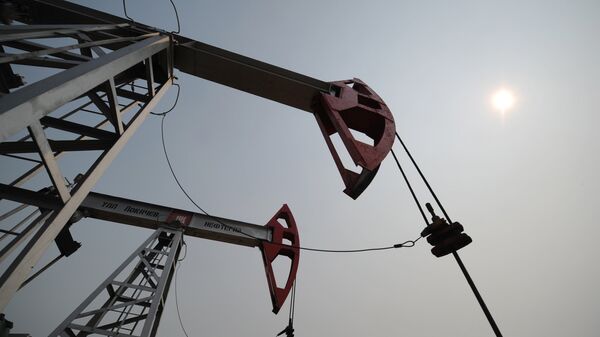Kristian Rouz — International oil prices, along with US energy stocks, posted gains in the aftermath of the most recent OPEC decision to increase oil production by less than previously expected. This comes as market participants were pricing in an increase in the global oil supply ahead of the OPEC meeting amidst calls from energy consumers to contain rising fuel costs.
Saudi Arabia's successful bid to persuade its rival Iran to ease curbs on oil extraction has produced a surge in the West Texas Intermediate (WTI) oil price to its highest since November 2016 to above $69/bbl.
READ MORE: Saudi Minister: OPEC Leaves Politics Out of Discussion
However, OPEC and its allies, including Russia, are now engaging in another round of talks to coordinate a modest increase in production. Some OPEC member-states are voicing concerns that the loosening of production caps could dampen oil prices to below their breakeven costs.
"I hope that today in the meeting with our friends in non-OPEC we as well will reach the same conclusion," UAE Energy Minister Suhail Al Mazrouei said. "I am confident that it is not going to be a difficult meeting."
OPEC has agreed to increase its total output by 700,000 barrels per day (bpd). However, the market's reaction to the decision has reflected the oil cartel's declining influence on global energy prices due to rising US output and crude exports.
"When you think about this in terms of the total production, it's just not that big an increase, so it should be able to support it without a problem," Joe Kinahan of TD Ameritrade said.
Additionally, Iranian officials said they didn't expect their energy customers would get waivers from the US sanctions, meaning the global energy market may be disrupted.
Market participants aren't certain of how the new agreement will resolve the complex set of problems OPEC is facing. The ongoing economic turmoil in Venezuela, accompanied by a steady decline in its oil production, is weighing on OPEC's ability to coordinate its overall production.
Moreover, US restrictions on trade in oil extraction technology and equipment is casting a shadow on the production capacity of other countries in the medium to long term.
"It will be enough for now but not enough for the fourth quarter to address a decline in Iranian and Venezuelan exports," Gary Ross of S&P Global said. "There isn't a lot of spare capacity in the world. If we lose a million bpd of output from Venezuela and Iran in the fourth quarter, where will all these barrels come from? We are in for higher prices for longer."
The expectations of higher prices are encouraging news for US shale drillers, who are envisioning a greater number of oil rigs to be commissioned in the second half of the year. However, US producers are facing a different challenge to their output capacity — a lack of oil pipelines.
The existing pipeline infrastructure in the Permian Basin in Texas is working at almost full capacity, and projected gains in output could bring railways back into the spotlight. This despite the advocated for Keystone XL pipe in North Dakota has stressed oil transportation by rail is risky and could jeopardize both the environment and public safety.
"We will reach capacity in the next 3 to 4 months," Scott Sheffield of Pioneer Natural Resources Co. said. "Some companies will have to shut in production, some companies will move rigs away, and some companies will be able to continue growing because they have firm transportation."
Saudi Energy Minister Khalid al-Falih warned that the global economy could be facing an oil supply deficit of some 1.8 million bpd in the second half of this year. He also stressed OPEC must address this challenge in order to avoid an increase in crude prices to its 2007-2008 levels of $150/bbl.
READ MORE: Russia, Saudi Arabia Seek New Super-OPEC Oil Alliance — Reports
OPEC ministers said they could bring compliance closer to 100 percent by relaxing output cuts. However, the low levels of compliance suggest the bloc might be supplying more oil to the market than it's supposed to. But precise numbers are hard to calculate, as some of OPEC's oil production is taking place in war-torn regions.
Following Saturday's meeting between OPEC and its allies, the bloc will gather again in September, and on December 3, to discuss further steps to stabilize the global energy market.





